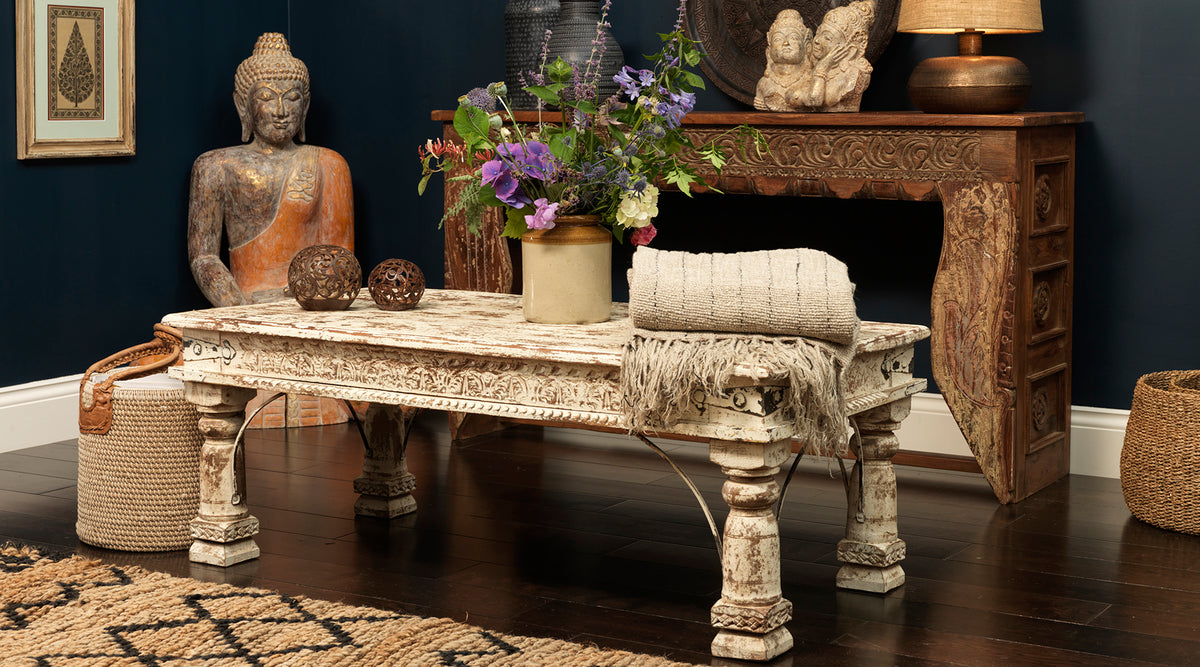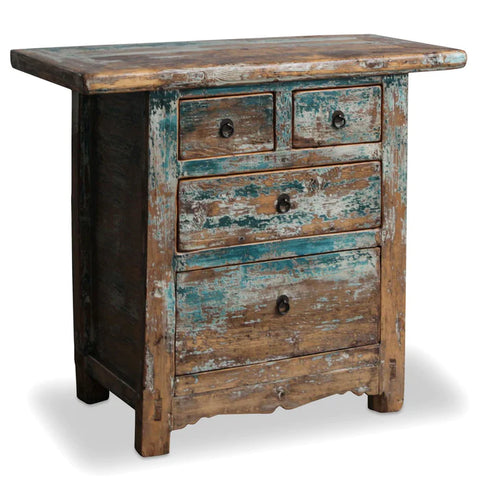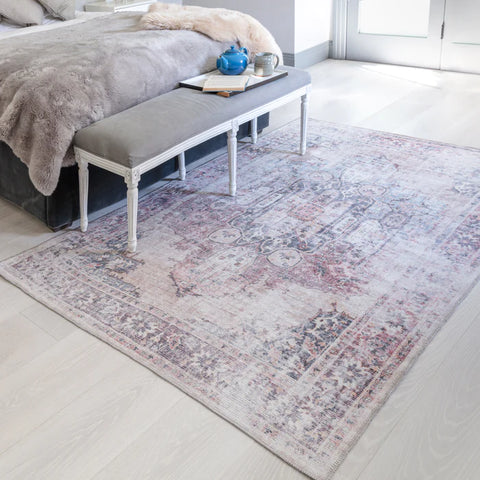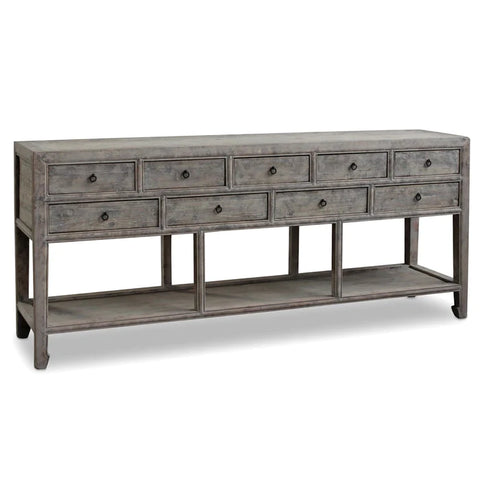
Why the distressed trend shows no sign of disappearing
While home decor trends don’t always follow the same rules as fashion, there is one major shift that has united the two in recent years. Fast fashion is firmly out of vogue - indeed, as furniture designer Timothy Corrigan has said: “Fast furniture now leaves a bad taste in people’s mouths.”
The focus on sustainability may not have been the genesis of the distressed trend, but is one of the reasons it shows no sign of disappearing. Consumers want eclectic but enduring furniture for their homes, and covet high quality, artisanal pieces in natural materials. Both interior designers and homeware shoppers continue to be drawn to distressed and ‘imperfect’ pieces.
Trending interiors on Instagram highlight the popularity of furniture made from high-quality authentic and sustainable materials. Mismatched and distressed pieces offer practicality and longevity, and the overarching trend is one of comfort and informality. We’ve picked a selection of our own pieces to illustrate some of these trends.

Flawsome
Ideal Home describes this trend as a bid towards sustainability by taking loved but flawed pieces and putting them to new use. This means buying vintage furniture, or pieces made from recycled materials, whilst taking joy from their imperfections. “We’ll see interiors that embrace the flawsome trend, a design quality that celebrates the imperfections in previously hidden objects or artworks by restoring their beauty and giving them a new life,” comments Maryanne Cartwright, Head of Design at Graham and Brown. “This idea that we can curate a unique identity by marrying the old with the new and reworking preloved materials, is something that we predict to see in modern interior design.”
Made from solid poplar, this storage chest has a highly distressed blue and cream lacquer finish which brings out the natural grain of the wood. The chest would have been used originally to store valuables and personal possessions, and boasts an especially deep bottom drawer which we believe formerly contained a fixed panel, providing a 'hidden' section for more valuable items.

Comfortcore
It’s hardly surprising that there’s been an ongoing trend for making our homes our sanctuaries for the last few years, and it’s this notion from which ‘comfortcore’ is born. Leaning into snuggly blankets and steering away from hard edges, this lifestyle concept focusses on natural materials and cosy textures, from warm-toned wood to plush textiles. “Calming textures really came into the limelight during the stressful years of lockdown uncertainty,” says Kelly Collins, interior designer and Head of Creative at Swyft. “Unsurprisingly, they’ve yet to fall out of favour. People want their home to feel like a tranquil haven, particularly in the bedroom and living room – both designated for relaxing and filled with plush, soft furnishings.”
The distressed finish to our Lila rug softens its traditional floral pattern and central motif which both adds to its character and helps lend it to a cosy, relaxed space. It’s available in three sizes, so would work in your bedroom or living, room and is made from 66% chenille and 34% cotton.

Hipstoric
Last year’s major trend, maximalism, saw interior designers and style savvy home makers playing with big patterns, rich colour schemes and bold clashes. For those still fond of their maximalist-styled spaces, this year’s natural trend evolution has come in the shape of the eclectic ‘hipstoric.’ Combining contemporary interiors and accessories with vintage and antique furniture, the style brings a more personal and softer note to the maximalist trend, without sacrificing the nostalgia at its core. Pinterest has named hipstoric one of its top trends for this year, which is perhaps no surprise to those in the design industry who recognise the staying power of antique and vintage pieces. Designer Avalana Simpson comments: “People are looking at ways to allow antiques and modern touches to co-exist together in harmony. Whether that’s bringing in vintage elements such as Persian rugs into contemporary schemes, or up-cycling furniture that has a story to tell.”
This antique side cabinet in black lacquer from the Shanxi region of China features what would once have been bright paintings, including a Chinese peacock, but these have been elegantly faded by time. The original black lacquer is distressed and crackled, belying its age of circa 1850. The dark finish, elegant lines and charming original hardware mean the piece will perfectly suit a hipstoric interior or maximalist styling.

Artisanal
Stylist magazine reports a revival in artisanal homewares and furnishings, as well as growing interest in how things are crafted and where they come from. This is an extension to the consumer focus on sustainability, with people keen to ensure purchases are going to last, and that the materials used are as gentle on the planet as possible. Authentically natural and recycled materials, bespoke and handmade pieces all fit the bill beautifully, and the knowledge that consumers are supporting a small businesses or individual is a popular choice too. “In the fight against fast furniture and the disposable, it’s never been more important to buy things that are meant to last,” says Robin Standefer, co- founder of interior design firm Roman and Williams.
This versatile bench is made from natural elm wood and has a warm, weathered finish. It works well as extra seating in a kitchen or for occasional use in the hallway or end of the bed. The design is typical of benches from the Shanxi region of China where it was handmade. It features a thick, rustic seat which extends over A-frame legs.

Circularity
With sustainability still on everyone’s mind, the concept of ‘circularity’ is becoming more prevalent, better understood, and increasingly popular. The design industry is beginning to think about how products can be ‘made to be re-made,’ for example, utilising recycled and reclaimed materials, and up-cycling existing pieces. Adopting circularity in home styling gives a softer, more personal character, and a shift away from show home perfection. “As we move away from fast fashion as a society, we too are moving away from ‘fast design’,” says Charlotte Cropper of Lick. “With this comes quality products, and making long-term sustainable and conscious lifestyle choices when it comes to our homes”.
This wooden console has been made from beautiful reclaimed pine timbers which have been finished in a natural, rustic patina to allow the grain to show. Each of the nine drawers has a simple ring handle, and their size offers plenty of useful, flexible storage space, making the console perfect either for the dining room or bedroom.
